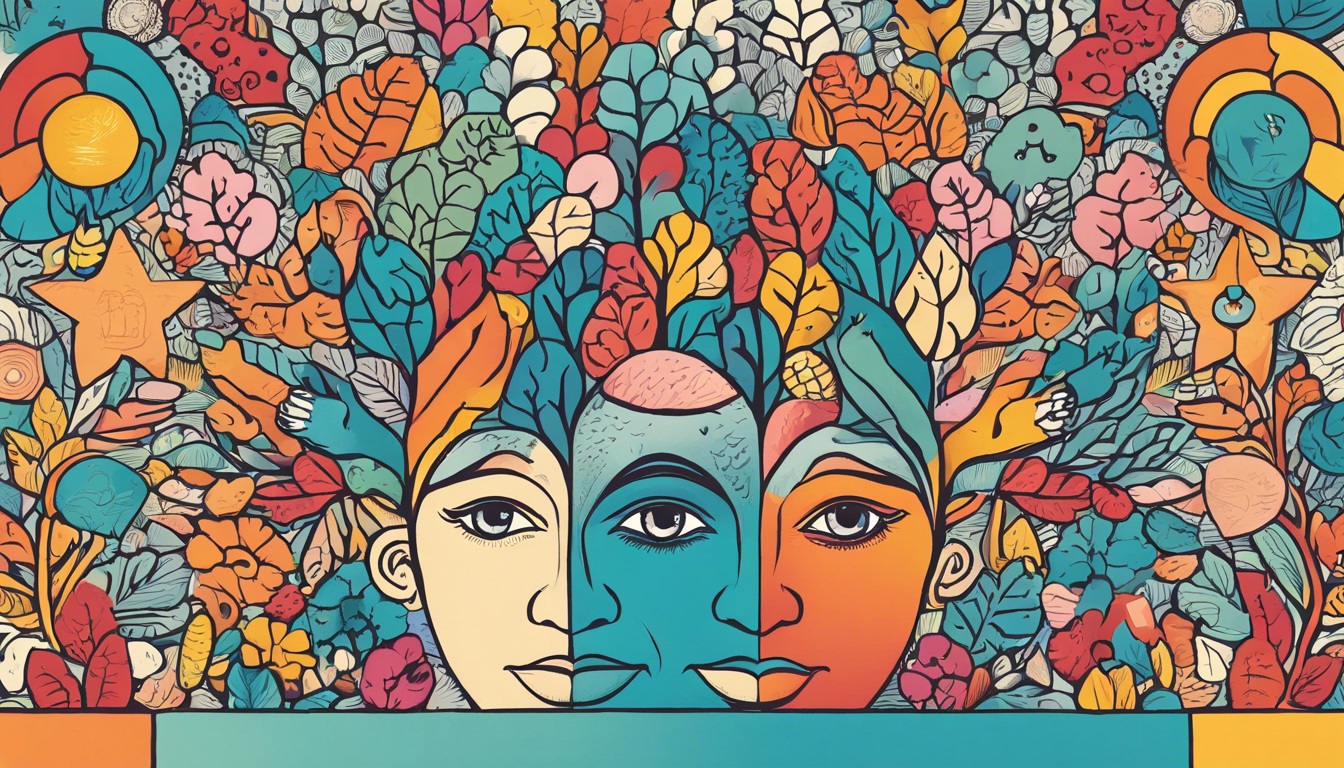Synchronicity
Learn more about human thought patterns and the concept of synchronicity. Understand the experience of synchronicity and how to interpret experiences in order to achieve spiritual transformation and personal growth.
What is Synchronicity?
Synchronicity is a phenomenon in which people interpret two separate and unrelated experiences as being connected or intertwined, but causality mechanisms cannot explain them.

Although it may be impossible to scientifically test synchronous phenomena, we may seek spiritual meanings and signs behind synchronicity.
Researchers and scientists consider such situations to be more likely a meaningful coincidence that a person considers significant due to human thought patterns, such as confirmation bias.
When people experience synchronicity, they describe such events as “miracles,” “signs from above,” mystical cases of soul connections and guidance from the soul and spirits.
Examples of Synchronicity
The concept of synchronicity, while universally recognized, has different meanings for different individuals. It manifests uniquely for each person, often deeply resonating with personal experiences. Here are some widely spread examples of how synchronicity can appear in our lives:
- Numbers: Repeated encounters with specific numbers or sequences (such as 11:11 on a clock or recurring numbers in addresses) can be considered a significant pattern. You can interpret these patterns as signs or messages relevant to circumstances.
- Colors: Certain colors that repeatedly appear in someone’s life during critical moments can form significant connections. For example, consistently noticing a specific color during important life events can be interpreted as a guiding sign or symbol.
- Animals: Encounters with certain animals can be perceived as synchronicities, especially in unusual circumstances. For instance, frequently seeing a particular animal during significant life moments can be interpreted as a meaningful pattern carrying a message or special guidance.
- People and Symbols: Meeting individuals who bring significant changes or perspectives into someone’s life, often unexpectedly, exemplifies synchronicity. Similarly, encountering specific symbols that resonate with personal circumstances can form meaningful connections for understanding one’s life journey.
- Musical Messages: Hearing a song or music piece that deeply resonates with current emotions or life situations, especially in unexpected places, can be perceived as a synchronistic event, forming a significant link to one’s feelings or experiences.
- Dreams: Dreams that offer insights, solutions to problems, or seemingly prophetic information about future events can be seen as significant patterns connecting the subconscious to external reality.
- Sounds: Hearing a conversation, a specific phrase, or words that strangely refer to a person’s current situation can be interpreted as synchronicity, suggesting a significant connection between inner thoughts and the external world.
- Unexplainable Natural Phenomena: Witnessing rare or unusual natural events that coincide with personal life events can be perceived as synchronous. These phenomena often defy logical explanations and are interpreted as part of a larger, meaningful pattern in the universe.
- Divine Synchronization: The concept that things happen at the “right time” or that certain events are meant to occur at a specific moment for an important reason is often associated with synchronicity. This can be seen as a way for the universe to create meaningful connections and patterns in our lives.
History of Synchronicity
Carl Gustav Jung, the father of analytical psychology, began exploring his theory in the 1920s, and the term synchronicity was officially introduced in a lecture at the Swiss Society for Psychical Research in Zurich in 1930. Later, he elaborated on this concept in his 1952 publication, “Synchronicity: An Acausal Connecting Principle.”

Jung wrote that synchronicities are related to human destiny and chaos theory, which states that synchronicities manifest an underlying order where everything that fascinates individuals ultimately becomes significant.
Modern research describes synchronicity as a subjective personal experience, whereby coincidences between the external world and an individual’s mind might not have a direct relationship, but could have an unknown connection.
According to Jungian psychology, synchronicity is a healthy and necessary function of the mind. However, contemporary scientists consider these coincidences unscientific. Many other factors explain these experiences, including seeking information to ignore data that challenges their thinking and supports their ideas. Jung’s theory continues to be studied by psychoanalysts and physicists.
Synchronicity vs. Serendipity
The terms synchronicity and serendipity are often confused. However, they differ in terms of their nature and implications.
Serendipity is when something beneficial happens by chance. For example, if you’re looking for spare change and unexpectedly find a coin in your pocket, that’s serendipity. It represents those moments of fortunate discovery, often acting as a beacon of hope in challenging times.
On the other hand, synchronicity involves a deeper level of experience. It’s not just about experiencing luck or serendipity.
When facing synchronicity, you recognize a series or pattern of significant and symbolic events. This concept is often described as a path that leads individuals to new destinations through a life lesson, a message, or an affirmation.
Unlike serendipity, which is akin to the last glimmer of hope in difficult times, synchronicity suggests a guided journey where each event feels like an essential step in your personal and spiritual development.
Causes of Synchronicity
The cause of synchronicity is not easily explained within the realm of conventional scientific understanding, as it ventures into psychology, spirituality, and even metaphysics. However, several perspectives and theories attempt to explain why synchronicity occurs:
- Psychological Projection and Perception: One theory is that synchronicity is a product of the human mind’s tendency to perceive patterns and attribute meaning to them. This psychological perspective suggests that synchronicity arises from our innate desire to create meaning in a chaotic world.
- Collective Unconscious: Jung theorized that all humans share a deeper collective unconscious layer containing universal archetypes and symbols. Synchronous events may arise from this collective unconscious, significantly revealing these common symbols and themes.
- Spiritual and Metaphysical Theories: Various spiritual and metaphysical belief systems propose that synchronicity is evidence of a guiding force in the universe, such as destiny, fate, or divine intervention. These perspectives suggest that synchronicities are signs or messages from the universe, God, or other spiritual entities guiding individuals’ life paths.
- Interconnectedness of All Things: Another perspective aligns with the idea that everything in the universe is interconnected. From this viewpoint, synchronicity manifests the underlying connections between all things, revealing hidden patterns and alignments in the fabric of reality.
Interpreting Synchronicity
We may not understand or be able to interpret when experiencing synchronicity. Learning to interpret signs will help us determine if we are on the right path, making wise decisions, and if our lives align with our values and needs.

Synchronicity can help us find new opportunities that can change our lives. Other times, synchronicity teaches us a lesson, such as stopping the pursuit of a job or a relationship that won’t work.
Accurate ways to interpret synchronicity include meditation, exploring hidden symbolism, finding patterns, harmonizing with our own bodies, and using tools like a pendulum, oracle cards, and tarot cards.
Meditation
Questioning oneself about the meaning of experiences, if feelings, words, symbols, or images affect thinking patterns.
Repeating the practice at least three times will allow us to confirm if our experiences have entered the mind.
Understanding Symbolism
We can experience synchronicity in hidden symbolism, where certain objects can symbolize or refer to an aspect of someone’s life. For example, a black cat could symbolize poor life choices or bad news coming.
We must reflect on our experiences and consider if synchronous events have a deeper meaning represented by symbolism.
Additionally, the meanings of hidden symbols can be determined using reliable online sources or a dictionary of symbols.
Aligning with Your Own Body
To understand the impact of significant coincidences, one must pay attention to bodily experiences and physical signs, such as chills or goosebumps.
Practicing self-awareness and observing any notable changes you may experience can help navigate such coincidences without the influence of the mind. It is essential to continue searching for patterns if immediate answers are not found. Seeking Patterns
A simple way to interpret synchronicity in one’s life is to find recurring behavioral patterns.
These patterns could be related to concerns and questions about their life and the source of their worry, anxiety, and frustration. We often experience synchronicity when seeking solutions and answers to our concerns.
Searching for patterns and connecting them to synchronicity can help us make meaningful connections. Synchronicity and Angel Numbers
111 Angel Number Cited
Angel numbers are a fascinating concept in spirituality and personal growth. They refer to number sequences—such as 111, 222, 333—that repeatedly appear in someone’s life in various forms, like on clocks, license plates, or phone numbers. These numbers are believed to carry special messages from divinity or spiritual guides.
The significance of each sequence often roots in numerology or spiritual belief systems, with each number or combination holding a unique meaning.
The connection between angel numbers and synchronicity is particularly intriguing.
If you consistently notice the number sequence 444 and it coincides with significant thoughts or events in your life, this can be considered a synchronistic phenomenon. It’s as if the universe aligns these numbers with your personal experiences.
Both concepts point towards a greater sense of interconnectedness and universal guidance.
While angel numbers are often interpreted as direct communications from spiritual entities or the universe, synchronicity suggests an underlying order and interconnectedness in the cosmos. Synchronicity and the Law of Attraction
There are conceptual overlaps and similarities regarding the spiritual and philosophical principles underlying the 12 laws of the universe and synchronicity.
Although not rooted in scientific or psychological foundations like Jung’s synchronicity, these laws are embraced by many for personal and spiritual growth.
Some laws, such as the Law of Attraction, resonate with the idea of synchronicity, reflecting an interconnected universe where thoughts and events are significantly linked.
Jung’s synchronicity involves interpretation and personal growth, somewhat similar to the Law of Attraction, which posits that positive or negative thoughts bring positive or negative experiences into a person’s life.
Disclaimer
The content of this article is provided for informational purposes only and is not intended to replace professional medical advice, diagnosis, or treatment. It is always recommended to consult with a qualified healthcare provider before making any changes related to your health or if you have any questions or concerns about your health. We are not responsible for any errors, omissions, or consequences that may result from the use of the information provided.
